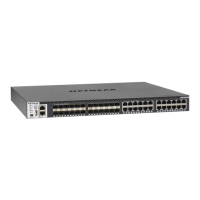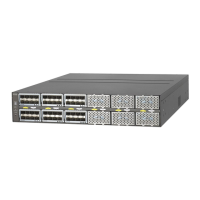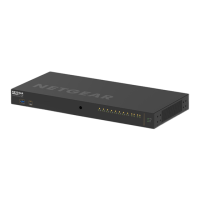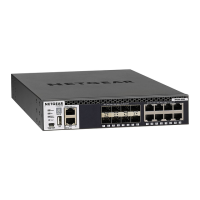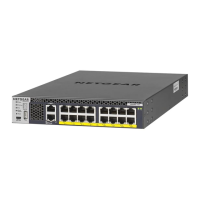Configuration Examples
439
M4100 Series Managed Switch
• Destination Mask: 255.255.255.0
• Destination L4 Port: Other, and enter 4568 as the destination port value
For more information, see Configure a DiffServ Class on page 247.
4. Click the APPLY button.
5. From the Policy Configuration screen, create a new policy with the following settings:
• Policy Selector: Policy1
• Member Class: Class1
For more information, seeConfigure DiffServ Policy on page 254 .
6. Click the ADD button.
The new policy is added.
7. Click the Policy1 hyperlink to view the Policy Class Configuration screen for this policy.
8. Configure the policy attributes as follows:
• Assign Queue: 3
• Policy Attribute: Simple Policy
• Color Mode: Color Blind
• Committed Rate: 1000000 Kbps
• Committed Burst Size: 128 KB
• Confirm Action: Send
• Violate Action: Drop
For more information, see Configure DiffServ Policy on page 254.
9. From the Service Configuration screen, select the check box next to interfaces g7 and g8 to
attach the policy to these interfaces
10. Click the APPLY button.
See Configure DiffServ Policy Settings on an Interface on page 257.
All UDP packet flows destined to the 192.12.2.0 network with an IP source address from the
192.12.1.0 network that includes a Layer 4 source port of 4567 and destination port of 4568
from this switch on ports 7 and 8 are assigned to hardware queue 3.
On this network, traffic from streaming applications uses UDP port 4567 as the source and
4568 as the destination. This real-time traffic is time sensitive, so it is assigned to a
high-priority hardware queue. By default, data traffic uses hardware queue 0, which is
designated as a best-effort queue.
Also the confirmed action on this flow is to send the packets with a committed rate of
1000000
Kbps and burst size of 128 KB. Packets that violate the committed rate and burst
size are dropped.
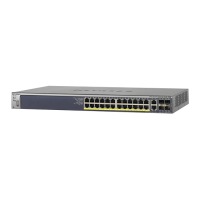
